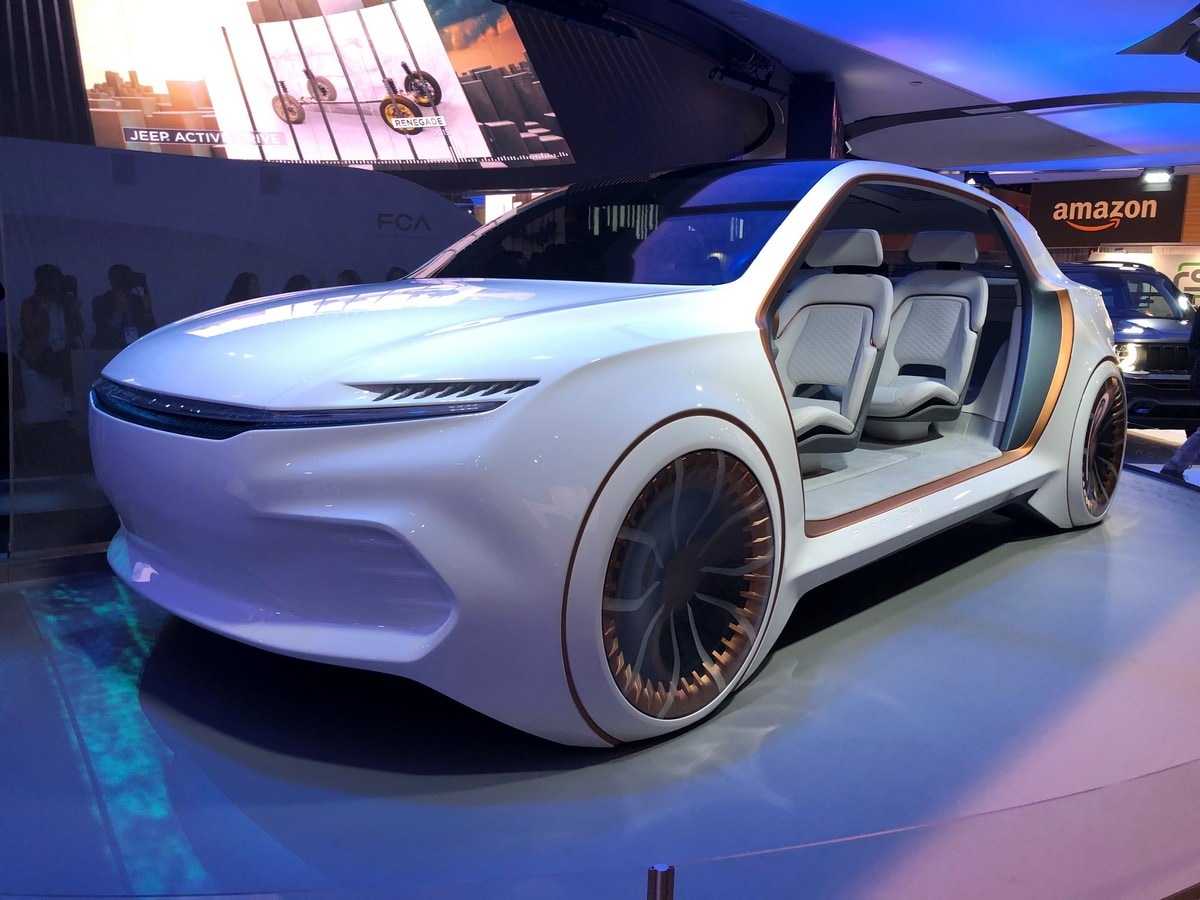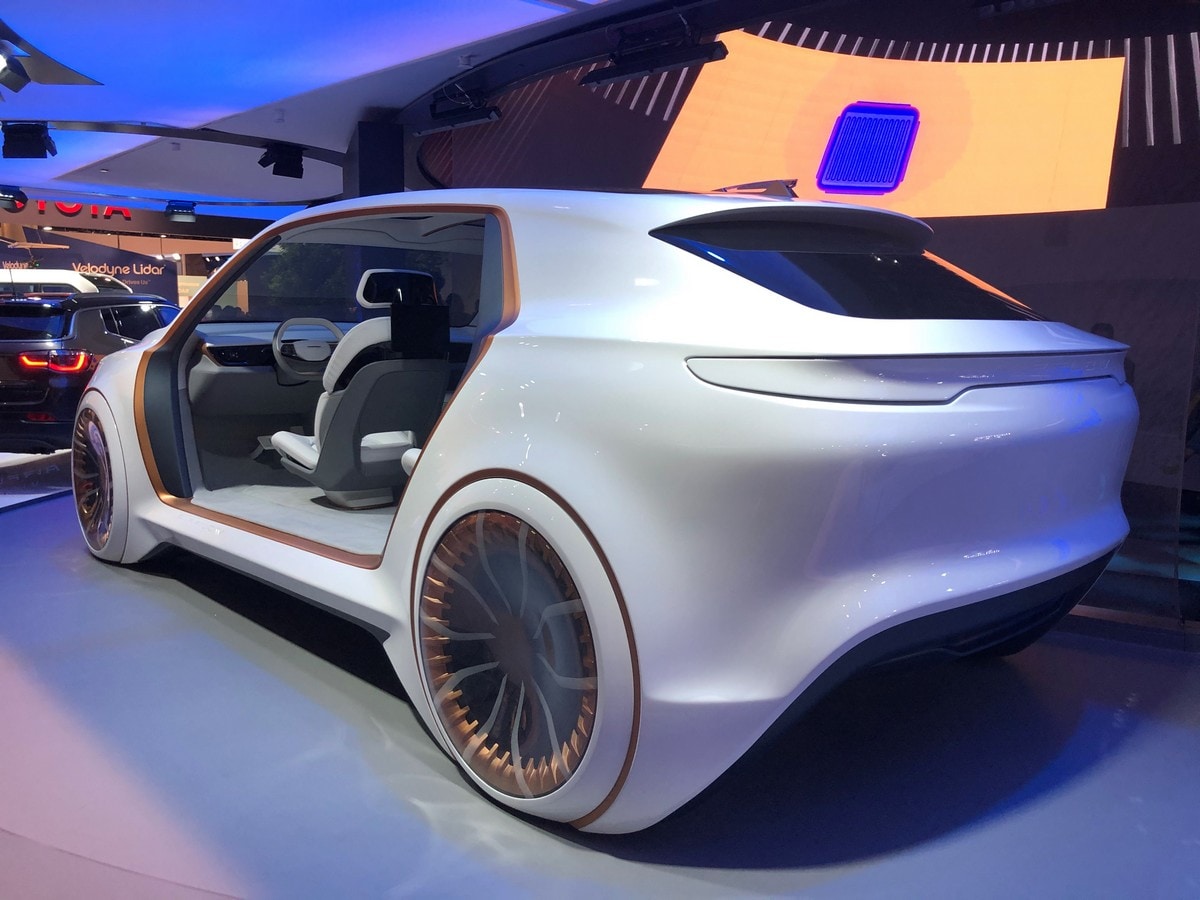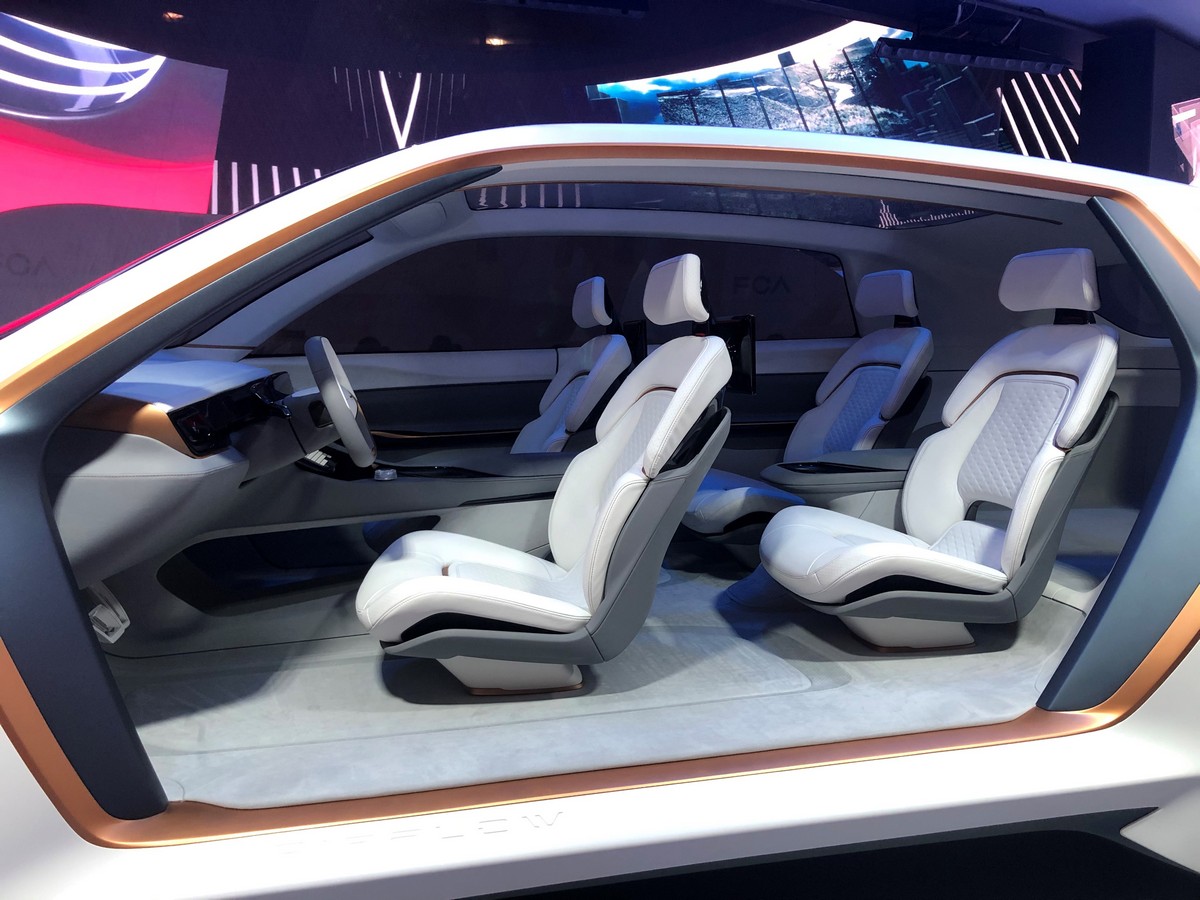- Concept shows new user interface
- Stresses clean, integrated look to dash
- Exterior stresses aerodynamics
The 2020 Airflow Vision is truly a clean-sheet-of-paper effort to debut exciting new styling, advanced exterior and interior technology and stimulate lots of talk about the future of transportation. As described by the Fiat Chrysler Automobiles (FCA) release, “The Airflow Vision is a sculptural design concept that envisions the next generation of premium transportation and UX (user experience) by considering how the driver and passengers could interact with advanced technologies.”
It is clear from first glance the Airflow Vision is an effort to integrate technology, styling and color. The muscular body lines feature LED lighting that not only illuminates the road ahead but also accent the details of the Arctic White exterior. Color is important here with the Airflow engineering team carefully selecting a “light, calming color palette” for the interior intermixed with soft suede and leather. Adding to the futuristic feeling of the Airflow is the Celestial Blue underbody, which makes the entire vehicle appear to float.
Name pulled from history
If cutting-edge technology is the focus of the Consumer Electronics Show (CES) in Las Vegas, then it makes perfect sense for FCA to tip its hand with a high-tech concept car. Clearly, the FCA Advanced Concept engineering team peeked into their history books to come up with a name for the new concept, the Airflow, pulled right from Chrysler’s colorful history. The original Airflow debuted in 1934 and was a landmark car with an innovative, aerodynamic design, 50/50 weight distribution, and unibody construction. The original Airflow greatly influenced the future of all automotive transportation.
The Airflow integrates a variety of design, and interior advances offering what could be the next best thing in transportation. Most notable may be the amazing integration of the bodywork into the tires, which would certainly reduce side-body airflow turbulence for reduced drag. The wheels’ design appears to be modeled after an engine turbine, providing a finishing touch for a striking final appearance.
Roomy cabin
If the exterior is not novel enough, the interior is impressive with its massive amount of space around the driver and passengers to bolster the final UX, code for driver experience for tech-types. The seats are on pedestals rather than bolted to the floor, which adds to the cockpit’s roomy feel.
But it is the instrument panel that will garner the most acclaim for its clean integration of driver information, readability and styling. According to FCA, “Built on the principles of depth, hierarchy, consistency and legibility, the user will be able to see and experience the interface in a way that is safe, easy to use and understand.”
LED readouts
The speedometer and other crucial driving information are still in front of the driver to the delight of traditionalists, but in a clean, black glass and LED-readout instrument panel for easy reading. A larger iPad-style panel above the center console contains an encyclopedia’s worth of tunable vehicle information. All controls are “menu-based,” allowing for the personalization of readouts.
In a move that will be especially exciting for backseat drivers, all vehicle data will display to each passenger seat in real-time. The company actually designed this feature to help with co-piloting, according to the press release.
From revolutionary design to stunning interior comfort and high-tech instrumentation, the new Airflow Vision is aptly named, a trendsetting concept of what could be in the very near future. Let’s hope they make something that carries these cool tech pieces into production.










